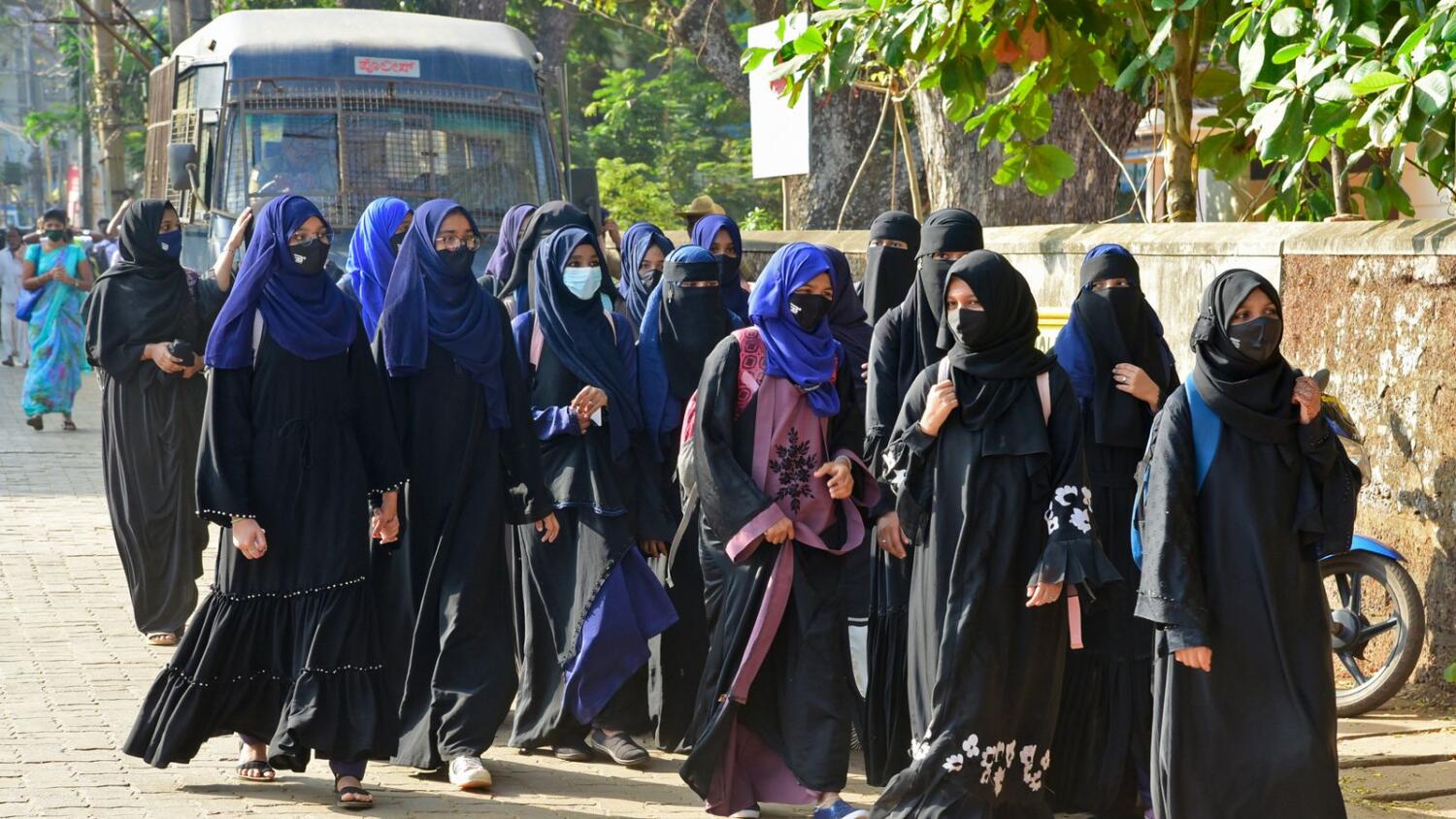KHANDERAO KAND
Summary: India as a secular country does not have restrictions on Hijab or Burqa in public. However unlike the schools in USA, the schools in India have their uniform dress codes (from pre-independence time, pre-1947). A student in Karnataka, Southern Indian state, was prohibited to participate in class by an educational institute under the state government 1983 act.
Even though, as per some experts, Hijab/Burqa are not among 5-necessities as per Holy Quran to be protected as fundamental religious rights under Indian law overriding institutional dress codes, it is a sensitive issue for them, and there are protests against this prohibition as a matter of religious rights. The protests are further fueled by Islamic fundamentalists aided with anti-India forces. The matter is in the high court of Karnataka for a legal judgment. Protests/counter protest should stop for legal and political settlement of the issue.
Details:
After the takeover of Kabul by the Taliban in Aug 2021, the world was concerned about an increase in extreme fundamentalist restrictions in Afghanistan and an increase in attempts of the same ideologies in South Asia. In Sept 2021, Taliban’s Higher Education Minister Abdul Baqi Haqqani announced its higher education policy, making women students required to wear hijabs. The Afghan Ministry for the Promotion of Virtue and Prevention of Vice plastered posters across Kabul’s cafés and shops earlier in January to encourage the wearing of the burqa, a full-body veil that also covers the face.
Coincidentally on this background, suddenly, a student from Karnataka, Southern state of India, started wearing Burqa/Hijab in a college where uniform dress code has been mandatory since its beginning. Unlike the education institutes in the USA, most of the education institutions in India have their uniform dress code up to 12th grade (high school). As women in Afghanistan have been protesting against the Hijab/Burqa mandate, their freedom activists, like Tamana Paryani and her two sisters, are getting arrested. Human Rights Watch condemned the Taliban’s treatment of the protesters, calling it a “violent crackdown.”
On this background, it should be a matter of investigating the timing and motivation behind the wildfire protests supporting regression from freedom to wear anything in public to restricting Burqa-Hijab. Unlike restrictions in Burqa/Hijab/Niqab in countries like Switzerland, China (Xinjiang province), France, Belgium, Sri Lanka, Netherland and many other countries, India does not have any restrictions for wearing religious clothes in public. However, education (unlike in education institutions in the USA) has uniform dress codes promoting equality.
The student was asked to adhere to the uniform dress code according to the Karnataka State education act 1983 (introduced during Congress – non BJP non-Modi era government). The student was prohibited in the class as she declined to adhere to the uniform dress code. As students in India have freedom to take admission to schools having their choice of education system and types of uniforms including madrassa that restrict female students to Burqa-Hijab, the student would not be deprived if they chose Hijab-Burqa over institutions uniform dress code by joining the institutions adhering Hijab-Burqa as dress code.
Being a sensitive matter to some Indian Muslims, there was a resentment. However, this incident was rapidly taken for protests and campaigns, especially on the background of elections in various states of India causing religious polarization. Similar types of protests happen supportive of repressive policies on Islamic women by Islamic fundamentalists and political leaders interested in their vote shares.
For example, in 1985 the Islamic fundamentalists protested against India’s supreme court’s judgment favoring maintenance (alimony) to 62-year old Shah Bano Begum (an aggrieved divorced Muslim woman). Similar protests were also launched when Prime Minister Modi’s government passed a bill to ban ‘triple talaq’, a practice in Indian muslims of giving divorce to women just by uttering the word talaq thrice. It is also reported that Pakistan’s Inter-Services Intelligence (ISI) is trying to fuel the Hijab controversy in India, through banned Khalistani outfit Sikhs for Justice (SJF) and funding ‘Hijab Referendum’ to carve out ‘Urduistan’ in areas of Rajasthan, Delhi, UP, Bihar and West Bengal.
On this matter, various rights activists have joined raising the case of the fundamental right of religious practice. India’s constitution is a secular constitution that supports religious freedom. In fact, there is a separate Muslim Personal law for muslims for their religious rights. As per some religious experts, there are five necessities/pillars of Islam (Shahada-Profession of Faith shahada, Salat-prayer, zakat-alms, sawm-fasting, Haji-pilgrimage to Haj). As per recent interviews of Kerala Governor Arif Mohammad Khan and Tarek Fatah, Hijab-Burqa, though commonly practiced in some Arabic Islamic countries, are not among necessities by the Holy Quran.
Hence, some legal experts says that Hijab might not be a fundamental necessity to be protected under Indian law overriding uniform dress codes of the institutions. Hijab-burqa, however, may be necessity as per Sharia law, which is being enforced by Taliban but not applicable to India. This matter better be settled by judiciary, rather than protests. Of course, India does not ban it in public or private appearance.
This matter is at the High Court of Karnataka. The previous judgments like the Bombay high court in 2003, the Madras high court in 2006, the Kerala High Court 2018, and even the Supreme Court in 2015 have banned Hijab in public educational institutions. We should look forward to getting a legal judgment from the high court on this issue.







